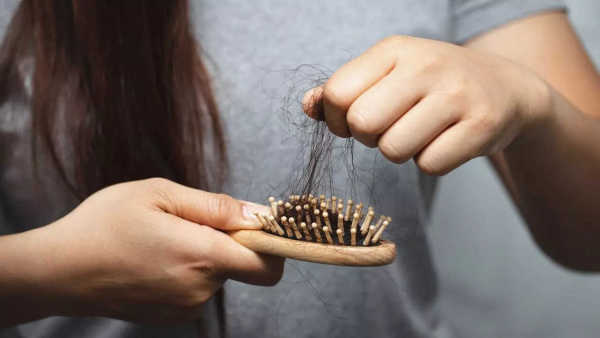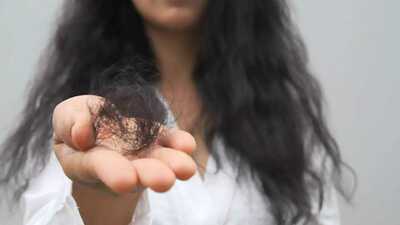Stress affects the body in many complex ways, and one of the most surprising effects is hair loss. Many people begin to notice shedding after a difficult period, a major life event or prolonged emotional pressure, and often they do not immediately connect it to stress. The process usually begins quietly. You may see extra strands on your pillow, in the shower drain or on your hairbrush, and assume it is normal. But when stress becomes chronic or intense, it can interrupt the natural hair growth cycle , forcing follicles to stop growing and enter a resting phase. The result can be sudden thinning, widening part lines or even visible patches of loss.
A peer-reviewed study led by identified a biological pathway that explains how stress hormones directly suppress hair follicle stem cells, preventing them from activating and producing new hair. The research demonstrated that stress elevates corticosterone, which interferes with signalling in the dermal papilla that is essential for follicle regeneration. The findings finally provide scientific evidence for why hair loss often follows stressful periods.
Why does stress-induced hair loss happen
Stress-induced hair loss develops when the body shifts its energy resources away from non-essential functions like hair growth and towards survival responses. Here are the main mechanisms involved.
Disruption of the natural hair growth cycle
Hair grows in phases: growth, regression, rest and shedding. Under stress, many follicles prematurely enter the resting phase, known as telogen effluvium. This sudden shift causes large amounts of hair to shed weeks or months after the stressful event.
Increased levels of stress hormones
Cortisol and related hormones rise significantly during chronic stress. According to the Harvard study, elevated corticosterone suppresses follicle activity, which stops new hair from forming and accelerates thinning.
Reduced blood flow and nutrient delivery
Stress causes blood vessels to constrict. This reduces circulation to the scalp, meaning follicles receive less oxygen and fewer nutrients. Hair becomes weaker, thinner and more prone to falling out.
Inflammation and immune response malfunction
For some individuals, stress intensifies immune system activity, which can attack hair follicles. This is often seen in alopecia areata and other stress-related autoimmune conditions.
Shock-related delayed shedding
Most people do not lose hair immediately during emotional trauma. Instead, shedding appears months later, making the connection difficult to recognise. When many follicles shed at once, the loss feels sudden and alarming.
Signs of stress-induced hair loss to watch for
- Hair falling in clumps or larger quantities than usual
- Sudden increase in shedding several weeks after a stressful period
- Widening parting or thinning across the top of the scalp
- Weak, brittle, easily breakable strands
- Itching or sensitivity on the scalp during high-stress phases
These symptoms can overlap with other causes, which is why awareness matters.
How long does stress-induced hair loss last

For most people, stress-related shedding is temporary. Once hormones stabilise and follicle function resumes, hair can begin to regrow. Recovery time varies from person to person. Mild cases may resolve in a few months, while severe stress or prolonged anxiety can take six months to a year or more to reverse. Consistency is key because the hair growth cycle moves slowly.
How to protect your hair when stress is the cause
There are practical steps that support recovery and prevent further loss.
- Manage stress through exercise, meditation, hobbies or therapy
- Improve sleep quality, as sleep restores hormone balance
- Focus on nutrition with protein, iron, zinc and omega-3 fats
- Avoid harsh chemical treatments, tight hairstyles or excessive heat
- Use gentle scalp care to improve circulation and follicle support
- Speak to a dermatologist if shedding becomes severe or persists
Reducing emotional and physical strain is often the most effective path to regrowth.
Stress induced hair loss is real, scientifically recognised and more common than many realise. When stress overwhelms the body, hair follicles shut down to conserve energy, leading to shedding, thinning and slow regrowth. The good news is that in most cases, the process is not permanent. With time, care and effective stress management, the hair growth cycle can restart, and follicles can recover.
Understanding how stress silently weakens hair growth encourages compassion, patience and proactive care. It reminds us that emotional well-being and physical health are inseparable.
Disclaimer: This article is for general informational purposes only and is not a substitute for professional medical advice, diagnosis, or treatment. Always seek the guidance of a qualified healthcare provider regarding any medical condition or lifestyle change.
Also read|
